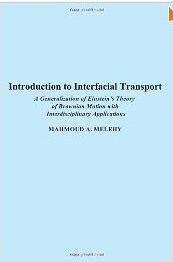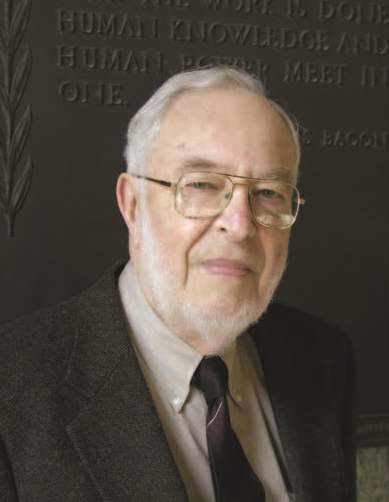In 1905 in his theory of Brownian motion, Einstein made a monumental contribution to thermodynamics. Specifically, he introduced, in that important branch of physics, the rate of change of the particle momentum, associated with thermal motion, to study the diffusion of suspended particles in liquids. This book shows that Einstein\'s procedure is justified, not only for this particular problem, but for interfacial systems generally. The consequent, new thermodynamic theory has unified the theory of semiconductor diodes and solar cells. Theoretical voltage-current characteristics have accurately corroborated experimental data reported by some 27 authors, over a period exceeding a quarter century. The present theory has, additionally, led to a novel result: the first and second laws of thermodynamics collectively require that electric charges reside at most surfaces, membranes, phase boundaries, and other interfaces. This general conclusion confirms Newton\'s speculation that capillarity and other interfacial phenomena involve electric forces. The thermodynamic prediction of interfacial electrification has explained numerous phenomena of interdisciplinary interest, such as: surface tension, capillarity, drop coalescence, adhesion of light particles to surfaces, the observed separation of charges upon phase change, fog and cloud suspension, the origin of atmospheric electricity, and the generation of static electricity, to mention a few examples. The book provides ideas and results that will stimulate theoretical and applied research in a variety of disciplines. The topic coverage is balanced for both researchers, who will find case studies with fundamental importance, and students, who will be introduced to the generalization of Einstein\'s theory of Brownian motion and its numerous, interdisciplinary applications.. - Amazon
Highlights of this book were selected for inclusion in the program of the 2005, Paris, \'Albert Einstein Century International Conference.\' The paper is published in the Conference Proceedings by the American Institute of Physics.
Overview
In his theory of Brownian motion, Einstein has made a monumental contribution to thermodynamics. Specifically, he has introduced, in that important branch of physics, the rate of change of the particle momentum, associated with thermal motion, to study the diffusion of suspended particles in liquids. In this book, it is shown that Einstein\'s procedure is justified, not only for this particular problem, but for interfacial systems generally.
The consequent, new thermodynamic theory has unified the theory of semiconductor diodes and solar cells. Theoretical voltage-current characteristics have accurately corroborated experimental data reported by some 27 authors, over a period exceeding a quarter century.
The present theory has, additionally, led to a novel result: the first and second laws of thermodynamics collectively require that electric charges reside at most surfaces, membranes, phase boundaries, and other interfaces. This general conclusion is the first confirmation of Newton\'s speculation that capillarity and other interfacial phenomena involve electric forces.
The thermodynamic prediction of interfacial electrification has explained numerous phenomena of interdisciplinary interest, such as: surface tension, capillarity, drop coalescence, adhesion of light particles to surfaces, the observed separation of charges upon phase change, fog and cloud suspension, and the origin of atmospheric electricity.
How much had been heretofore known, for example, about atmospheric electricity was described in 1988, in Scientific American, by E. R. Williams, who wrote: \"Lightning is one of the commonest and most spectacular of natural phenomena, and in the two centuries since Benjamin Franklin demonstrated that a lightning bolt is a giant electrical discharge, lightning and thunderstorms have been the subject of numerous scientific investigations. Yet, in spite of a barrage of new equipment and investigative techniques, lightning\'s exact origins and the mechanism by which rain clouds are electrified remain elusive.\"
Another phenomenon that had presented a challenge to explain, prior to the discovery of surface electrification, is the generation of static electricity by rubbing two different, insulating surfaces against one another. Concerning this phenomenon, Burland, and Schein wrote in a 1986 issue of Physics Today: \"That some materials can acquire an electric charge by contact or rubbing has been known at least since the time of Thales of Miletus, around 600 B.C., and much work has been done on understanding the phenomenology of the effect, particularly in the 18th, and 19th centuries; nevertheless the underlying physics of electrostatic charging of insulators remains unclear.\" - Interfacial Transport, Mahmoud Melehy



